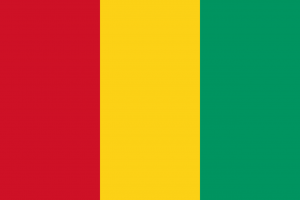Difference between revisions of "Language/Susu/Grammar/To-have"
Jump to navigation
Jump to search
m (Quick edit) |
m (Quick edit) |
||
| Line 2: | Line 2: | ||
[[File:Susu-Language-PolyglotClub.png|thumb]] | [[File:Susu-Language-PolyglotClub.png|thumb]] | ||
Hello Susu learners, | Hello Susu learners, | ||
➡ In today's lesson you will learn how to use the verb "to Have" in Susu language. | ➡ In today's lesson you will learn how to use the verb "to Have" in Susu language. | ||
Happy learning! | Happy learning! | ||
<span link>Take some time to dive into these other pages after completing this lesson:</span> [[Language/Susu/Vocabulary/How-to-Say-Hello-and-Greetings|Say Hello and Greetings in Susu]], [[Language/Susu/Grammar/Object-Pronouns|Object Pronouns]] & [[Language/Susu/Grammar/Future-Tense|Future Tense]]. | |||
== To have == | == To have == | ||
The <code>na + personal pronoun + yi</code> plays the role of the verb “to have”. | The <code>na + personal pronoun + yi</code> plays the role of the verb “to have”. | ||
It is conjugated as follows: | It is conjugated as follows: | ||
{| class="wikitable" | {| class="wikitable" | ||
| Line 42: | Line 38: | ||
|They have a brother/sister | |They have a brother/sister | ||
|} | |} | ||
N.B. : '''Tara''' can be replaced by any noun : | N.B. : '''Tara''' can be replaced by any noun : | ||
Ex. : | Ex. : | ||
| Line 59: | Line 52: | ||
== The negation == | == The negation == | ||
Forme '''B''' is the one most then used, as it is simpler. | Forme '''B''' is the one most then used, as it is simpler. | ||
| Line 86: | Line 78: | ||
|} | |} | ||
== | ==Other Lessons== | ||
* [[Language/Susu/Grammar/The-Demonstratives|The Demonstratives]] | * [[Language/Susu/Grammar/The-Demonstratives|The Demonstratives]] | ||
* [[Language/Susu/Grammar/Present-Tenses|Present Tenses]] | * [[Language/Susu/Grammar/Present-Tenses|Present Tenses]] | ||
| Line 96: | Line 88: | ||
* [[Language/Susu/Grammar/Past-Tense|Past Tense]] | * [[Language/Susu/Grammar/Past-Tense|Past Tense]] | ||
* [[Language/Susu/Grammar/Future-Tense|Future Tense]] | * [[Language/Susu/Grammar/Future-Tense|Future Tense]] | ||
<span links></span> | |||
Latest revision as of 19:50, 27 March 2023
Verb "to Have" in Susu
Hello Susu learners,
➡ In today's lesson you will learn how to use the verb "to Have" in Susu language.
Happy learning!
Take some time to dive into these other pages after completing this lesson: Say Hello and Greetings in Susu, Object Pronouns & Future Tense.
To have[edit | edit source]
The na + personal pronoun + yi plays the role of the verb “to have”.
It is conjugated as follows:
| Susu | English |
|---|---|
| Tara na n yi | I have a brother/sister |
| Tara na i yi | You have a brother/sister |
| Tara na a yi | He/She has a brother/sister |
| Tara na muxu yi | We have a brother/sister |
| Tara na won yi | |
| Tara na wo yi | You have a brother/sister |
| Tara na e yi | They have a brother/sister |
N.B. : Tara can be replaced by any noun :
Ex. :
- Banxi na n yi
I have a house
- xunya na n yi
I have a brother/sister
The negation[edit | edit source]
Forme B is the one most then used, as it is simpler.
| A | B |
| Tara mu na n yi | Tara mu n yi |
| Tara mu na i yi | Tara mu i yi |
| Tara mu na a yi | Tara mu a yi |
| Tara mu na muxu yi | Tara mu muxu yi |
| Tara mu na won yi | Tara mu won yi |
| Tara mu na wo yi | Tara mu wo yi |
Other Lessons[edit | edit source]
- The Demonstratives
- Present Tenses
- Possessive Adjectives
- Object Pronouns
- Na used as To be
- Xili To be called
- The subject pronouns
- Past Tense
- Future Tense
